Silverfish and Springtails



The Silverfish, Lepisma saccharina, is a primitive, wingless insect some 10-15mm long. It is nocturnal,
hiding in dark, damp places in houses in the day. Its common name comes from its silvery fishlike appearance and way of moving and its
Latin name from its love of sugar and starch. It can cause a lot of damage to paper-based products.
This (shown above) is the most common Silverfish in the UK and is prevalent worldwide, but the Grey Silverfish,
Ctenolepisma longicaudata, 15-20mm long with a blotchier and hairier appearance has spread from continental Europe. It has much
longer antennae and tail bristles. Silverfish are related to Jumping Bristletails and the Firebrat.



Silverfish nymphs (young) are 2-10mm long and are like small versions of the adult except they are
whitish and translucent. In two of the photos above of Silverfish nymphs, a tiny Springtail (Folsomia candida) has been
ringed to show comparative size - detailed below.



Springtails are not insects but a primitive pre-insect order. They have a lever under their "tail" that allows
them to jump when in danger. Orchesella cincta, shown above, present in UK, continental Europe and North America, is one of the
largest (at up to 4mm long) and one of the most distinctly marked (with its dark and white "belt"). They live in soil and leaf litter.




Folsomia candida is one of the most common springtails but is often overlooked as it grows to only 1.5mm long.
It looks white or translucent. They seek out damp. There are often hundreds in our homes if we suffer from damp or have well-watered
houseplants; they are common in commercial compost. They look like dust particles which move slowly when observed, especially on the
soil surface or saucers of houseplants or damp spots. They are harmless.

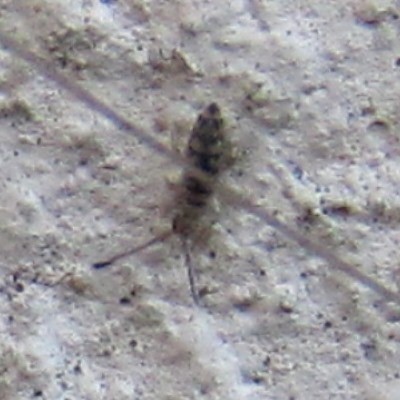
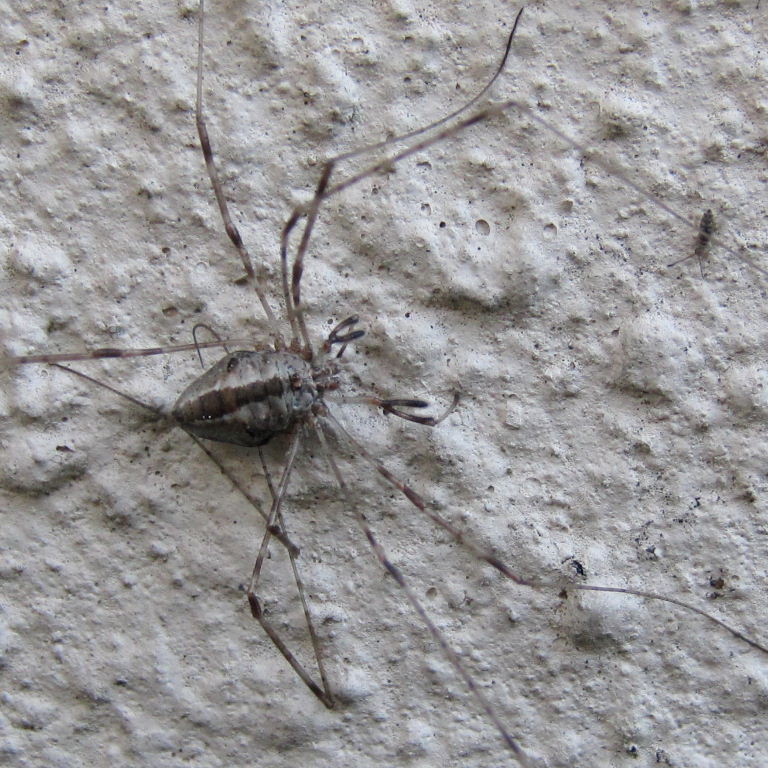
The Springtail Entomobrya multifasciata, shown above and also with a Fork-palped Harvestman for size comparison,
is present in the UK, continental Europe and North America most of the year (this one in December on UK house wall). This springtail grows to 2-2.5mm long.
Springtails are a key prey of the carnivorous harvestmen.

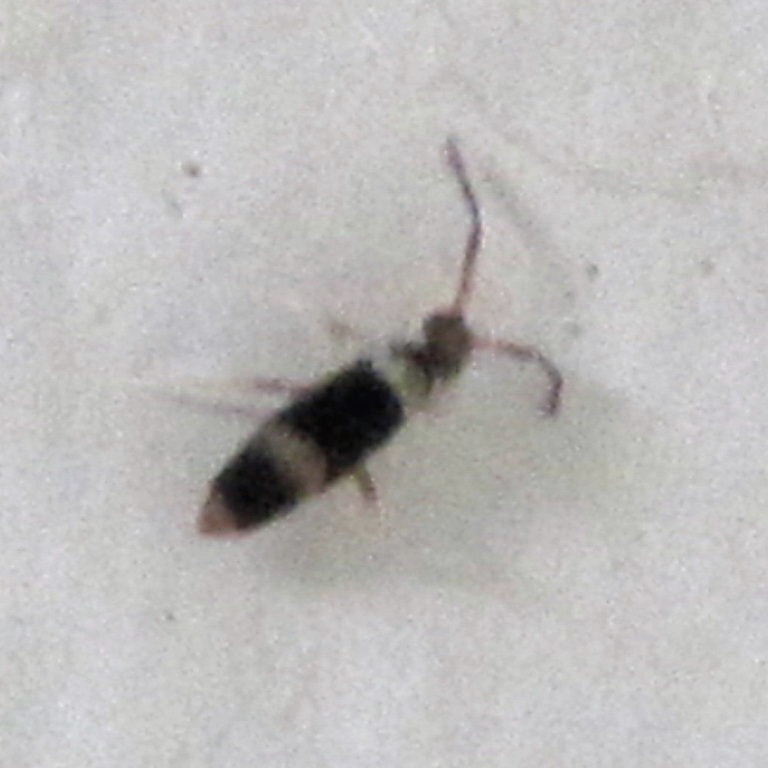
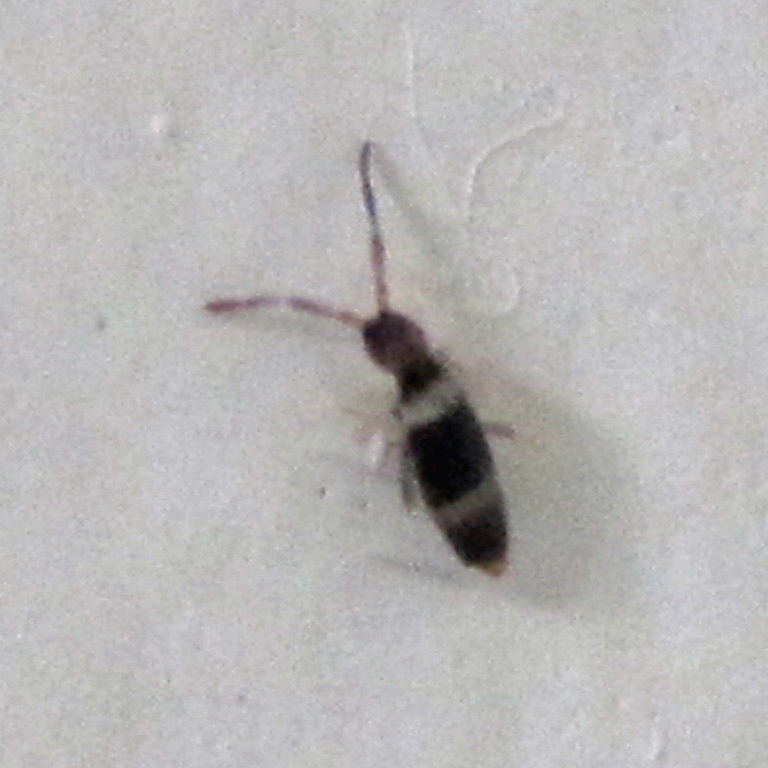
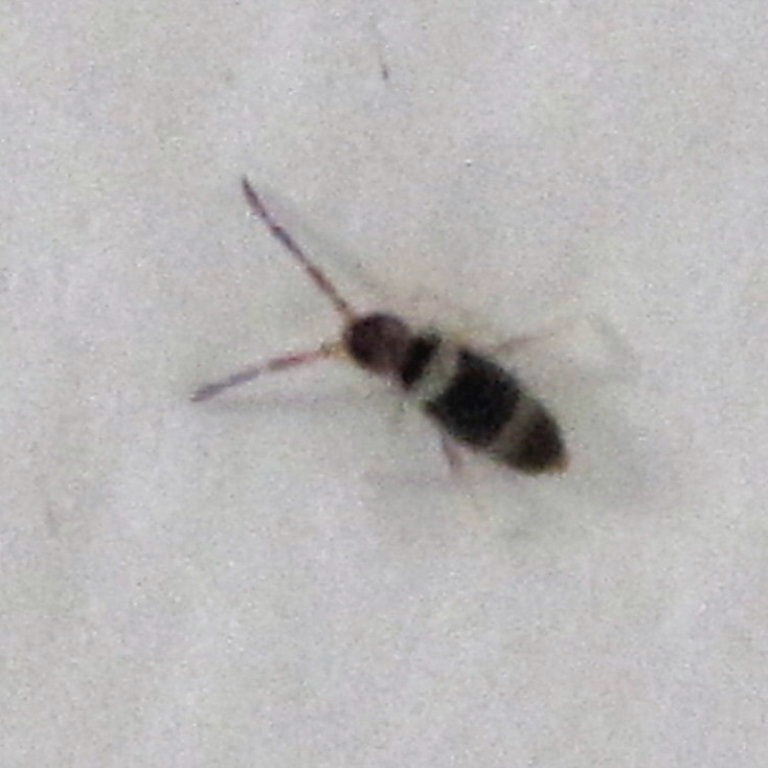
The Springtail Entomobrya albocincta, shown above, with its distinctive dark and light banding, is present in the UK
most of the year (this one in November on UK house wall). This springtail grows to about 2.2mm long.

